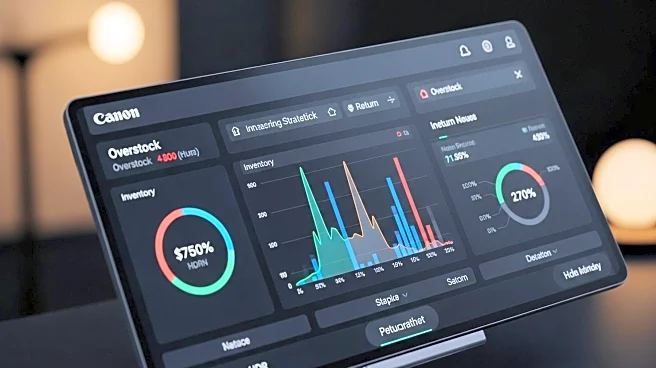What's Happening?
Retailers are increasingly adopting data-driven strategies to manage the resale of returned and excess inventory. In 2024, returns were projected to cost U.S. retailers $890 billion, representing nearly 17% of annual sales. This has prompted a shift towards using AI and predictive analytics to enhance efficiency and recovery rates in B2B resale operations. Online platforms are being utilized to streamline inventory management, offering multiple sales channels such as auctions and direct sales. These platforms provide insights into pricing, buyer access, and inventory movement, helping retailers optimize their resale strategies.
Why It's Important?
The adoption of data-driven resale strategies is crucial for retailers facing high costs associated with returns and excess inventory. By leveraging technology, retailers can improve recovery rates and reduce operational costs, turning returns into valuable assets. This approach not only enhances profitability but also supports sustainability goals by reducing waste. As the secondary market expands, driven by economic pressures and consumer demand for value, retailers that embrace these technologies can unlock new revenue streams and gain competitive advantages.
What's Next?
Retailers are expected to continue integrating data-based solutions into their B2B resale strategies, focusing on optimizing pricing and inventory management. The use of AI and machine learning will likely increase, providing more accurate pricing estimates and recovery rate forecasts. As the secondary market grows, retailers may explore new partnerships and technologies to further enhance their resale operations.
Beyond the Headlines
The shift towards data-driven resale strategies highlights the growing importance of technology in retail operations. It reflects a broader trend of digital transformation in the industry, where data analytics and AI are becoming integral to decision-making processes. This development also underscores the need for retailers to adapt to changing consumer behaviors and market dynamics.











